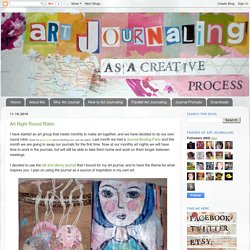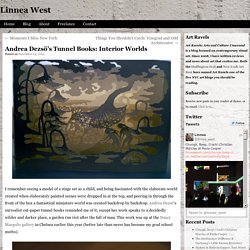

Rare Book School. Oops, I Craft My Pants: How to Make a Tunnel Card. Hey guys!

Today I'm going to show you how to make a really simple tunnel card. Here are the basics of what you'll need: -A piece of 4x6 cardstock -Glue -Scissors or other cutter-thingie -A scoring board (optional!) Begin with a 4x6 piece of paper with both sides decorated. Cut your piece in half, so you'll have two 3x4 pieces. Now fan-fold at your score lines (or marked measurements if you don't have a scoreboard) so that you end up with two pieces that are mirror images to one another, paying attention to the patterns on each side.
Take the back piece of your 4x4 Chipboard Die-Cut Frame and glue your pieces onto the outside edges . You'll end up with it looking like this! Now smear a little glue on the top flaps of your fan-folded pieces to attach the front of your frame. Carefully line up the back and front of your frame set and press it down, getting the glue nice and stuck. 52 Week Challenge: #11 DIY Notebooks. Cover To Cover: Creative Techniques For Making Beautiful Books, Journals & Albums (9780937274873): Shereen LaPlantz. Art journaling as a creative process. I have started an art group that meets monthly to make art together, and we have decided to do our own round robin (read my guest post about starting your own art night).

Last month we had a Journal Binding Party and this month we are going to swap our journals for the first time. Now at our monthly art nights we will have time to work in the journals, but will still be able to take them home and work on them longer between meetings. I decided to use the tall and skinny journal that I bound for my art journal, and to have the theme be what inspires you. Erik Kwakkel catalogs some of the world's oldest doodles. Dr.

F. (Erik) Kwakkel is a research scholar of paleography and codicology at Leiden University’s Centre for the Arts in Society. For those who are not aware of the term, paleography actually refers to the study of historical scripts and writing systems, in order to decipher and more importantly, date the various ancient manuscripts accurately. When he is not teaching graduate students, Kwakkel is usually too busy reading medieval books and manuscripts, in an attempt to catalog some of the world’s oldest surviving pen trials! Andrea Dezsö’s Tunnel Books: Interior Worlds. I remember seeing a model of a stage set as a child, and being fascinated with the elaborate world created when elaborately painted scenes were dropped in at the top, and peering in through the front of the box a fantastical miniature world was created backdrop by backdrop.

Andrea Dezsö‘s surrealist cut-paper tunnel books reminded me of it, except her work speaks to a decidedly wilder and darker place, a garden run riot after the fall of man. This work was up at the Nancy Margolis gallery in Chelsea earlier this year (better late than never has become my grad school motto). Paper art: 35 beautiful examples. We may live in a digital world, but our love affair with paper art has by no means diminished.

Folded into origami and kirigami, laser-cut, layered and made into sculptures, paper artists can transform a humble sheet of old tree into a spectacular artwork. Here are some great of examples of paper art being used imaginatively within contemporary design, giving new life to one of the most ancient arts. You're sure to find the inspiration you're looking for... 01. Self Preserving The Self Preserving campaign from cosmetics company Lush to promote its use of natural ingredients saw shop windows all over Europe fill with epic paper art.
A special hero installation in Lush's flagship store in London's Oxford Street even moved, masterminded by 3D designer Thomas Forsyth. 02. Paper art duo Julie Wilkinson and Joyanne Horscroft aka Makerie Studio design and create showpieces for window installations, advertising and editorial clients. 03. 04. 05. The series is based around the theme of nature. Medieval doodles prove that it's goode to scribble in ye margins. Medieval scribes got just as bored at work as you do.

Hunched over piles of parchment and the heavy books they were tasked with copying, long before Gutenberg and Xerox changed everything, they responded in the same way – by doodling. Stick men, scribbles and 1,000-year-old smiley faces adorn the margins and blank pages of the world's oldest manuscripts. For a book historian in the Netherlands, they represent a portal to a lost time, and are as rich a source of discovery as the texts themselves. Erik Kwakkel, from Leiden University, the oldest university in the Netherlands, says there are two types of medieval doodle: the idle shapes that we all produce; and "pen trials", which scribes used to get their nibs flowing after regular cutting.
We’ll tell you what’s true. From 15p €0.18 $0.18 USD 0.27 a day, more exclusives, analysis and extras.